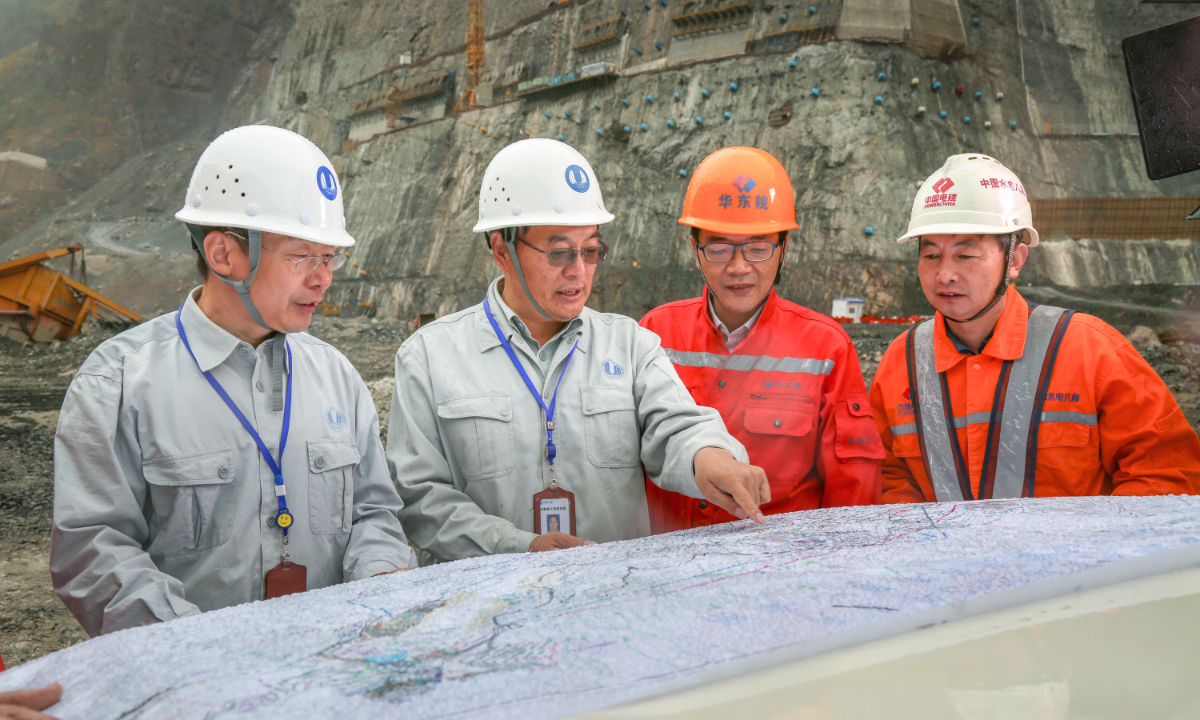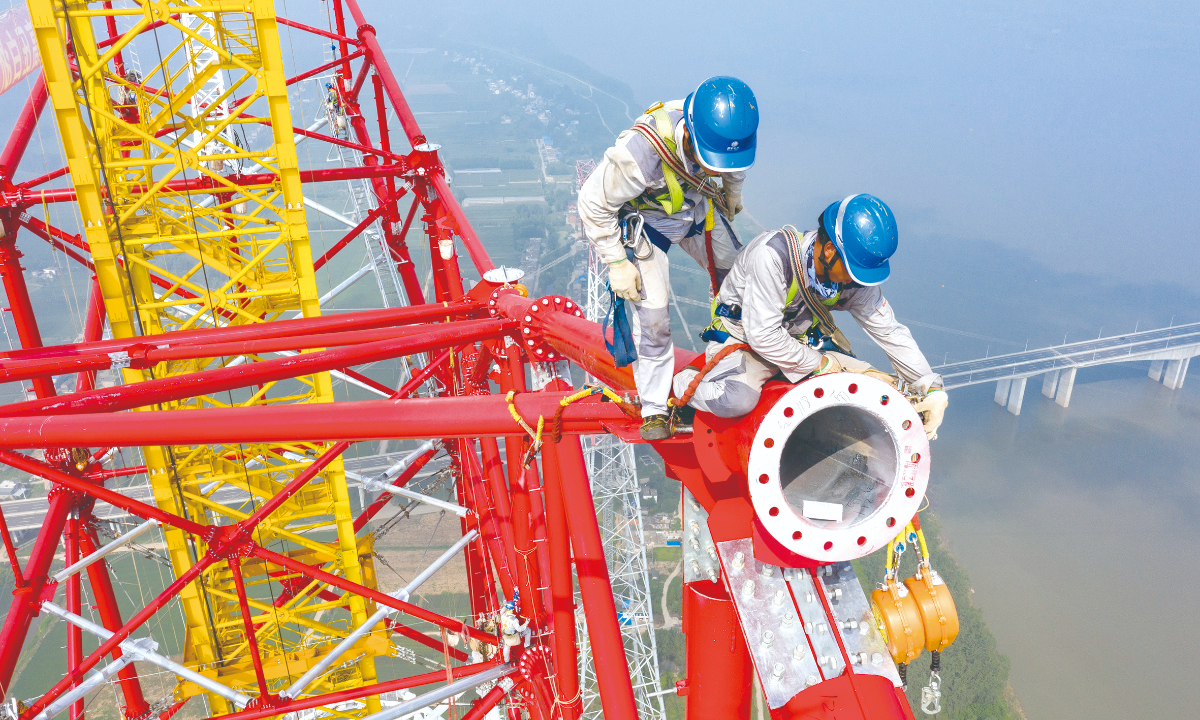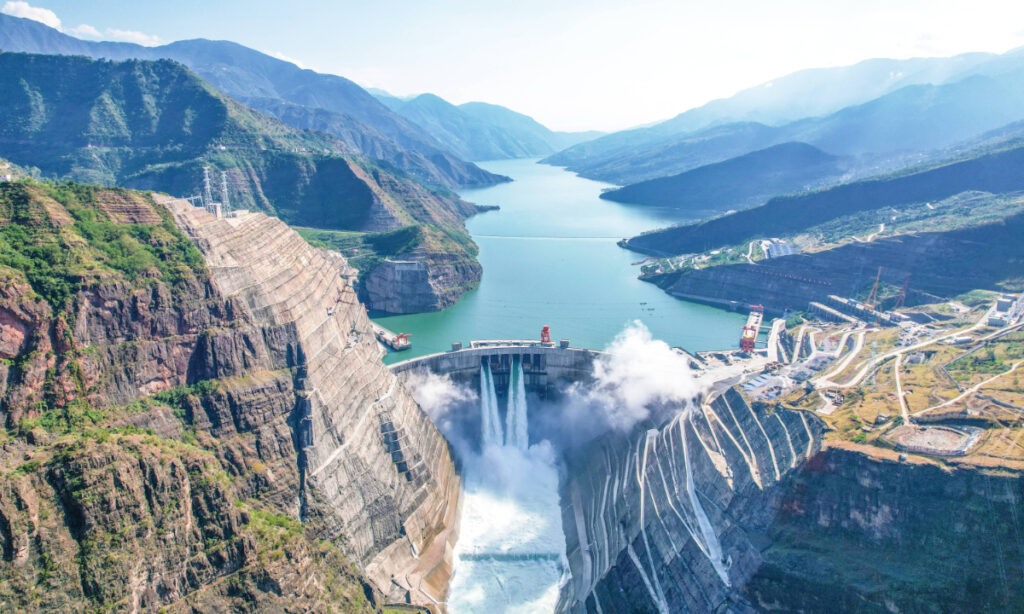Clean energy miracle
Who is the Communist Party of China (CPC)? What is the CPC’s role in the new era?
The CPC has grown into one of the largest parties in the world in the process of leading the Chinese people in seeking liberation and happiness, making China as strong and prosperous as it is today.
As the CPC ushers the nation into a new era of development, the last decade has witnessed great achievements in national strength and prosperity, with people’s confidence and recognition of this path rising to unprecedentedly high levels.
With more than 96 million members, the CPC concluded its 20th National Congress in October, which realized the goals of unifying thinking, fortifying confidence, charting the course for a new era, and boosting morale. The Global Times is publishing a series of stories to help the world understand the CPC in this new era, through stories from CPC members working on the frontlines of various fields, as well as through observations made by respected scholars.
In this installment, a veteran hydropower engineer shares his experience of participating in the construction of China’s mega-hydropower plants, illustrating how this country, led by the CPC, has mastered core technologies in high-end equipment.

Wang Zhilin (second from left) and people in charge of the design and construction units inspect the Baihetan hydropower station construction site. Photo: Courtesy of China Three Gorges Corporation
“Hydropower operators must go to the dam construction frontline.” This is a principle Wang Zhilin, who is determined to devote himself to China’s hydropower industry, has always upheld.
Wang, who is now about to turn 60 but is still active at the dam construction site, is also about to see his years-long efforts bear fruit.
The Baihetan hydropower station straddles the provinces of Yunnan and Sichuan in Southwest China. With 15 out of its 16 power generating units at the station now in commercial operation, Baihetan is currently the world’s largest and most technically challenging hydropower project that had recently entered the home stretch of full power generation.
“As I’m the on-site chief director, it is my great honor to lead the participating parties in turning Baihetan hydropower station from a blueprint into a reality,” Wang, director of the Baihetan hydropower station construction department, told the Global Times.
Wang is among those responsible for building the major national project with a total investment of approximately 170 billion yuan ($24.4 billion)。
Wang sees the successful commissioning of the station as the finale of his career. But this is not the only highlight from Wang’s career life.
Looking back over nearly 40 years of work, Wang has witnessed several super hydropower stations including the Three Gorges, Xiluodu, and Baihetan, the construction and management of which he had participated in. Wang said he was fortunate to become a “screw” attracted by the huge “lodestone” of China’s hydropower industry, and to be involved in a great era of continuous development and breakthroughs which have been achieved in China’s manufacturing industry.
A miracle in the deep mountains
“Baihetan hydropower station rose up in the deep canyon; I watched it become taller and taller day by day, just like my children growing up,” Wang said. Now, Wang, as an “old father,” feels immensely gratified to see the station is about to bring all units into commercial operation.
But Wang will also never forget the sleepless nights which plagued him for several months in 2014, when he had just arrived at the first construction site.
The Baihetan hydropower station has set a number of “world first” records in hydropower plant building while still under construction, including the world’s largest underground cavern group, the installation of the first one-million-kilowatt single-unit hydroelectric turbine generator, and the world’s largest dam using low heat cement concrete. Achieving any one of these “firsts” would be an unprecedented challenge.
The Baihetan hydropower station plants have all been constructed underground. The water transmission and flood relief system as well as the transportation network traverse the mountains. The total length of the tunnels for power generation and flood control is about 217 kilometers.
At the same time, the main stratum in the dam area of the station is made of loose basalt; the rock surface was very susceptible to deformation and flaking during the excavation. At that time, there was no systematic study of such a situation at home and abroad, which posed a great challenge to the design and construction of the station.
In order to find the most suitable construction plan, Wang organized visits to various tunnels and railroad excavation projects across China, seeking technologies that could be borrowed and applied, and discussed construction plans with design teams to master the mechanical properties of basalt rock. Finally they succeeded in building the world’s third-highest 300-meter class extra-high arch dam under the world’s most complex topographical and geological conditions.
For Wang, a big construction site is also a large battlefield. Safety has a central position in the mind of Wang, who was the site chief director of the battle.
“Compared to similar projects, Baihetan hydropower station has the greatest capacity to resist natural disasters. The general arch dam structure cracking safety factor is 1.8; Baihetan Dam’s concrete structure cracking safety factor is 2.0; the dam can withstand 16.5 million tons of the world’s second largest water thrust long-term which can be achieved without damage,” Wang noted.
Wang said this is his absolute loyalty and responsibility to the CPC and the people as a Party veteran with a 23-year history as a member.
“Party membership for me is not only a politics status, but also a heavy responsibility. I need to conscientiously fulfill the obligations of a Party member, trying my best to create world-class quality projects for the Party and for the people.”
Wang pointed out that in the construction of the Baihetan hydropower station, the group of Party members is undoubtedly the backbone. “We have set up about 200 ‘Party member Red Flag Posts’ and Party members technical research groups toward scientific breakthroughs, leading all other staff members to create a series of groundbreaking hydropower innovation achievements, such as the comprehensive application of intelligent water transfer technology and the realization of precise temperature control of dam concrete,” Wang said.
Witness the great rejuvenation
On April 3, 1992, the Resolution on Construction of Three Gorges Project on the Yangtze River was passed at the Fifth Session of the Seventh National People’s Congress. The slogan “Building the Three Gorges Dam for China” calls upon Chinese hydropower staff engineers, including Wang, to action.
In July 1992, after having received his master’s degree, Wang gave up an opportunity to work in Shanghai and joined in the construction of the Three Gorges Project, where he worked for 15 years.
With the development of the China Three Gorges Corporation (CTG), in 2007 Wang was transferred to the Xiluodu hydropower station construction department, responsible for the technical, safety, and environmental protection work of the station construction project.
“Now, I am still working on the construction site, from the Three Gorges Dam to Xiluodu, and Baihetan station. I am deeply aware that socialism is earned through hard work,and there is no difference in the new era,” Wang said.
Wang said that the construction of the Baihetan hydropower station was proposed in the 1950s. “After the 18th CPC National Congress in 2012, under the strong leadership of the CPC Central Committee and with the support of strong national strength, 20,000 construction workers and 100,000 migrants devoted themselves to the project, and relevant departments have conducted efficient coordination, finally achieving, against the backdrop of the COVID-19 pandemic, the completion and operation of the Baihetan hydropower station,which has shocked the world,” he said.
On April 24, 2018, Chinese President Xi Jinping, during an inspection tour of the Three Gorges Dam, urged robust independent innovation capacity for China, saying the country must master the core technologies of high-end equipment.
China would not have its leading ability if it had relied on others to build the dam, said Xi, also general secretary of the Communist Party of China Central Committee and chairman of the Central Military Commission.
The great rejuvenation of the Chinese nation can only be achieved through untiring struggle, he said.
Wang noted that in the past, the technology gap between China and Western countries in hydropower construction was at least 30 years. In 1977, the total installed capacity of hydropower in China was only 16 million kilowatts, exactly the same size as the total installed capacity of the Baihetan hydropower station.
“At that time, the total installed capacity of the Liujiaxia Hydropower Station on the Yellow River only exceeded 1 million kilowatts, but the total installed capacity of the Grand Coulee Dam in the US reached 6.8 million kilowatts during the same period,” Wang noted.
Although a latecomer, China has caught up. With the deployment of the West-East power transmission program, China’s hydropower industry has equally seen rapid progress. At present, the total installed capacity of the hydropower reaches 400 million kilowatts, and China owns five of the top 12 hydropower stations in the world in terms of installed capacity.
“The time has come for China to lead the world in hydropower development,” Wang said.
Infinite development potential

Utility technicians working at the construction site of the transmission tower of the Baihetan-Zhejiang 800-kilovolt ultra-high-voltage direct current power transmission project over the Yangtze River in Chizhou, East China’s Anhui Province on August 1, 2022. Photo: Xinhua
On June 28, 2021, President Xi sent a letter to the Baihetan hydropower station, offering his congratulations on the launch of the operations of its first two generating units. In the letter, Xi expressed his hope that all builders and relevant parties will advance the station’s follow-up work, make greater contributions to achieving the country’s carbon-peak and carbon-neutralization goals, and promote the comprehensive green transformation of economic and social development.
Currently, all units of the Baihetan hydropower station will be put into operation soon, but Wang said that a lot of work will have to be done before the project is fully completed. Among them, Wang noted that one of his team’s important pieces of work is to further strengthen the reservoir ecosystem restoration and protection, and strive to achieve the organic unity of economic, social, and ecological benefits.
Baihetan hydropower station, when fully operational, will join other stations including Wudongde, Xiluodu, Xiangjiaba, the Three Gorges, and Gezhouba, to form the world’s largest clean energy corridor, with a total installed capacity of 71.695 million kilowatts and an average annual power generation capacity of about 300 billion kilowatt-hours.
Up to now, the corridor has generated more than 3 trillion kilowatt-hours of electricity, which is equivalent to saving more than 900 million tons of standard coal and reducing more than 2.4 billion tons of carbon dioxide.
As opposed to many Western countries, where hydropower utilization rates exceeded 90 percent in the 1980s, China has a huge potential for hydropower utilization, Wang said, noting that by 2021, the utilization rate of hydropower resources stood at just over 50 percent.
Wang expected that with China’s energy transition process developing, hydropower will play a greater role in the future.
“In the future, large-scale hydropower projects will adhere to the CPC’s new concept of development, paying more attention to ecological protection and integrating with rural revitalization and development to benefit more people,” Wang said.
Wang said that he will continue to be busy on the construction site, training more Chinese hydropower talent to witness and create more miracles.
(Global Times)




